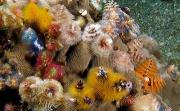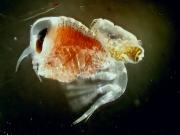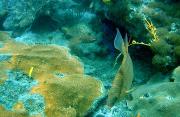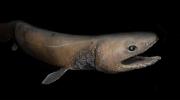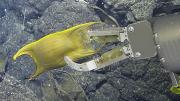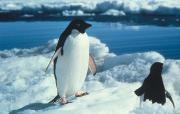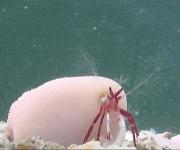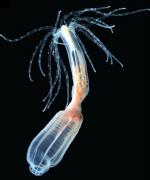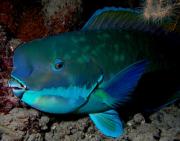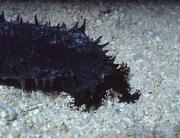Families that celebrate Christmas will likely have a colorful tree lighting up their living room right now. But under the sea, millions of Christmas tree worms remain festive all year. Christmas tree worms, whose scientific name is Spirobranchus giganteus, have two spiraled crowns on their back that each resemble a tiny colorful Christmas tree.
Articles
The Marine Science Institute's monthly column, Science and the SeaTM, is an informative and entertaining article that explains many interesting features of the marine environment and the creatures that live there. Science and the SeaTM articles appear monthly in one of Texas' most widely read fishing magazines, Texas Saltwater Fishing, the Port Aransas South Jetty newspaper, the Flour Bluff News, and the Island Moon newspaper. Our article archive is available also on our website.
Camouflage is one of the best evolutionary strategies there is for evading predators, and hogfish are masters of it. These pointy-nosed reef dwellers change skin color so rapidly to match their surroundings — literally in milliseconds — that it seems impossible for them to rely only on their eyes to perceive those surroundings.
Sailors’ lore about the ocean has captured popular imagination for centuries, from mermaids and sirens to the mythical Kraken. But often these stories are rooted in a case of mistaken identity. Tales of frightening sea serpents, for example, may have arisen in part from rare sightings of the elusive frilled shark, a long, slender fish that usually lives 400 to 4,200 feet below the surface.
It’s not just humans who enjoy a snack that jiggles and wiggles like gelatin does. To the surprise of scientists, it turns out several penguin species enjoy a bit of jellyfish in addition to their diet of fish, squid, krill and crustaceans. More than 350 hours of video footage from small “penguin cams” in the wild showed that Adélie, yellow-eyed, Magellanic and little penguins eat a wide range of gelatinous critters while hunting for other food.
They say that home is where the heart is, and that is literally true with hermit crabs — they carry the shell that houses them wherever they go. Since hermit crabs steal their shells from other creatures, usually sea snails, their shells do not grow with them. So a hermit crab only leaves its shell when it has outgrown the home and moves into a larger one, sometimes even killing the shell’s current resident to acquire its new dwelling.
One of the most effective treatments for a venomous bite or sting in humans is anti-venom, which is manufactured from the venom itself. But what if a creature’s venom changes over time? That’s exactly what scientists recently found in the starlet sea anemone, and it raises important questions about the way humans use venom, especially in medicine.
Farmers don’t typically grow crops on all of their land simultaneously – they rotate crops and leave some land fallow so soil can recover and remain fertile. It turns out some herbivorous reef fish also understand not to over-harvest their food. They give it time to recover, which benefits them as well as the coral on which their food grows.
You may have heard that starfish can regrow arms they’ve lost, but imagine a creature that can regrow nearly all its internal organs. Sea cucumbers have no brain, eyes or heart, but when they have to protect themselves, they turn themselves inside out and eject their intestines, reproductive organs and respiratory tissues. But these soft tube-shaped animals can regrow all that tissue within about six weeks. Researchers hope studying the sea cucumber’s remarkable regeneration abilities will offer insights for human medicine.

